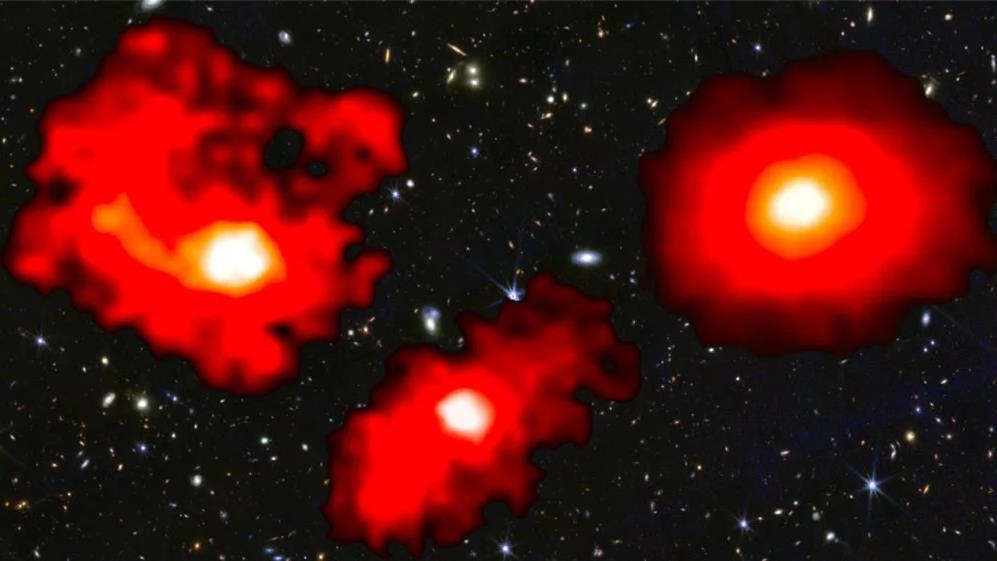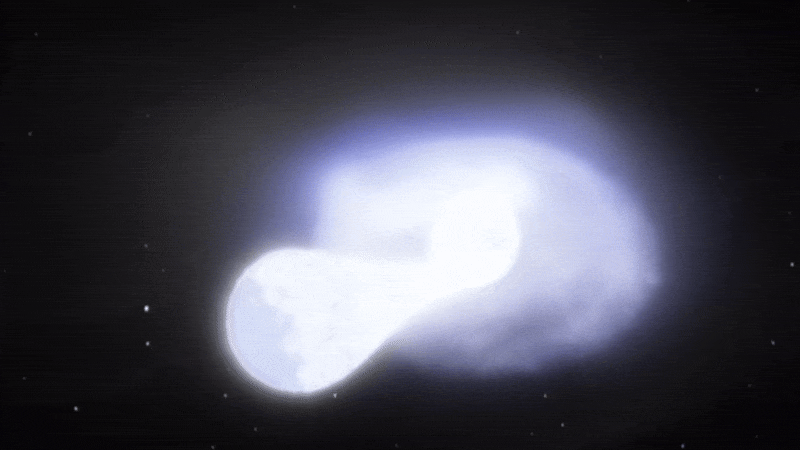Discovery of two giant radio galaxies hints at more to come

I. Heywood, University of Oxford / Rhodes University / South African Radio Astronomy Observatory / CC BY 4.0.
- Two recently discovered radio galaxies are among the largest objects in the cosmos.
- The discovery implies that radio galaxies are more common than previously thought.
- The discovery was made while creating a radio map of the sky with a small part of a new radio array.
The universe is vast, and a lot of the stuff in it is massive. In a new study published in Monthly Notices of the Royal Astronomical Society, researchers have added to the list of nearly unfathomably large objects with two giant radio galaxies, each much, much larger than the Milky Way galaxy we call home.
Radio galaxies are galaxies with extremely active central regions, known as nuclei, which shine incredibly brightly in some part of the electromagnetic spectrum. They are known for emitting large jets of ionized matter into intergalactic space at speeds approaching that of light. They are related to quasars and blazars. It is thought that supermassive black holes are the energy source that make these galaxies shine so brightly.
What makes these two galaxies (known as MGTC J095959.63+024608.6 and MGTC J100016.84+015133.0) so interesting is their size. Only 831 similar, “giant radio galaxies” are known to exist. As study co-author Dr. Matthew Prescott explains, these are particularly large even for giants:
“These two galaxies are special because they are amongst the largest giants known, and in the top 10 percent of all giant radio galaxies. They are more than two mega-parsecs across, which is around 6.5 million light-years or about 62 times the size of the Milky Way. Yet they are fainter than others of the same size.”
The smaller of the two is just over two megaparsecs across, roughly six and a half million light-years. The larger is almost another half megaparsec larger than that.
Exactly how these things get to be so massive remains a mystery. Some have proposed that they are ejecting matter into unusually empty space, allowing for the jet to expand further, though some evidence contradicts this. The most commonly suggested idea is that they are simply much, much older than the previously observed radio galaxies, allowing more time for expansion to occur.
While exciting and impressive on their own, the findings also suggest that there are very many more of these giant galaxies than previously supposed. If you were going off the previous estimates for how typical these galaxies are, then the odds of finding these two would be 1 in 2.7×106. This suggests that there must be more, given that the alternative is that the scientists were impossibly lucky.
In the study, the researchers also apply this reasoning to smaller versions of these galaxies, saying:
“While our analysis has considered only enormous (>2 Mpc) objects, if radio galaxies must grow to reach this size, then we may expect to similarly uncover in our data previously undetected GRGs with smaller sizes.”
Exactly how common radio galaxies and turn out to be remains to be seen. Still, it will undoubtedly be an exciting time for radio astronomy as new telescopes are turned skywards to search for them.
The new galaxies were discovered by the amusingly named MeerKAT radio telescope in South Africa during the creation of a new radio map of the sky. The MeerKAT is the first of what will soon be the Square Kilometre Array of telescopes, which will span several countries in the southern hemisphere and make even more impressive discoveries in radio astronomy possible.





